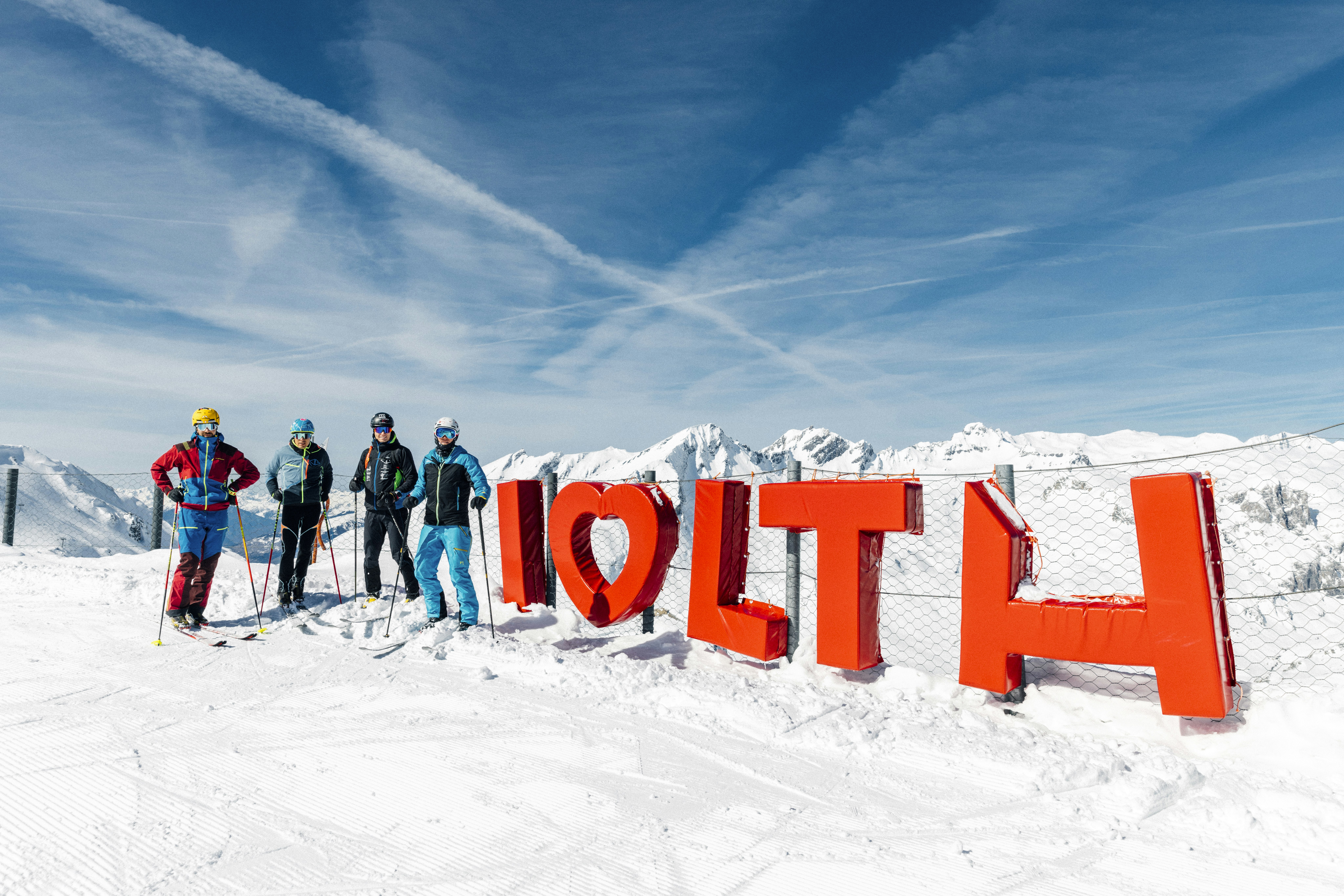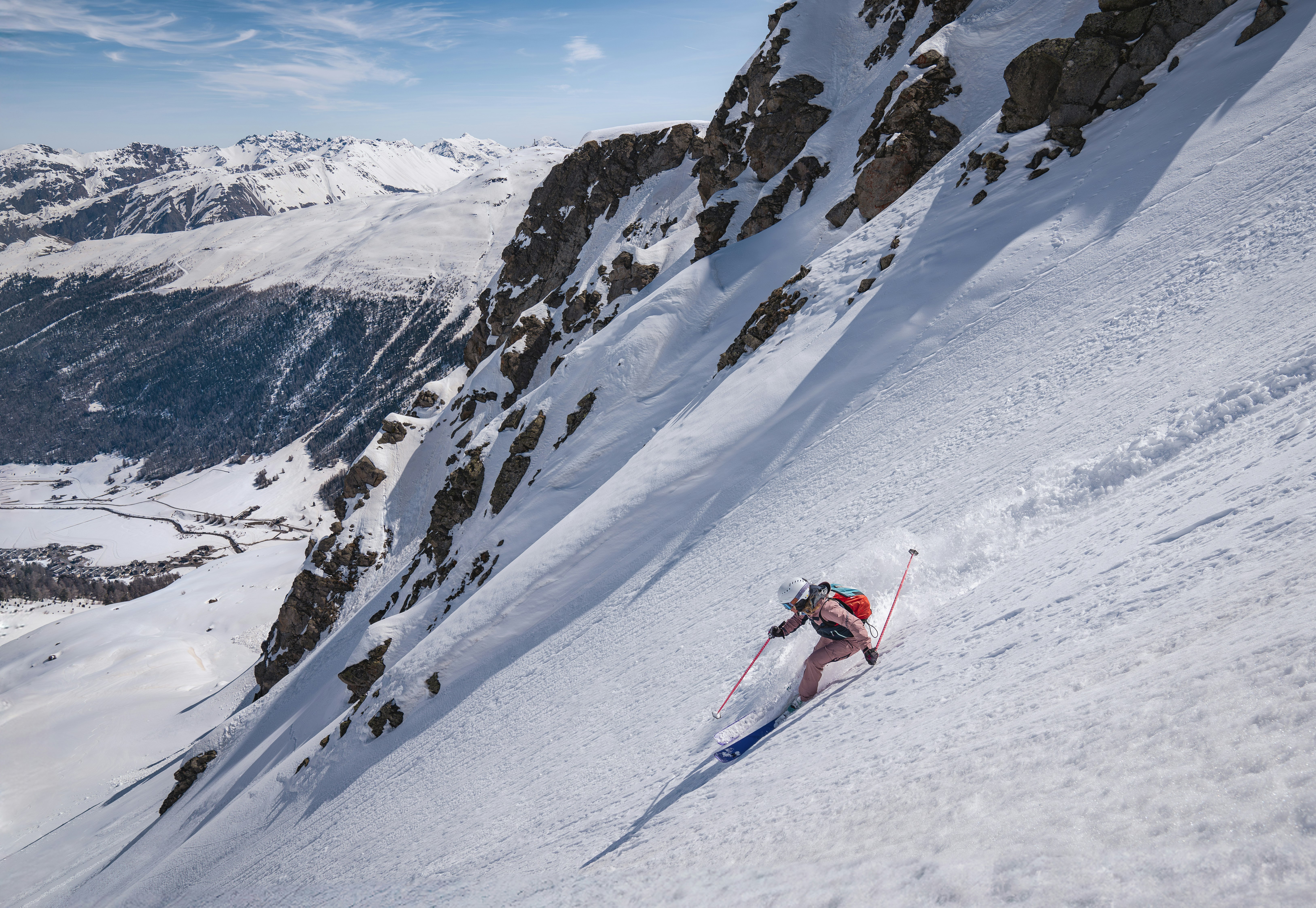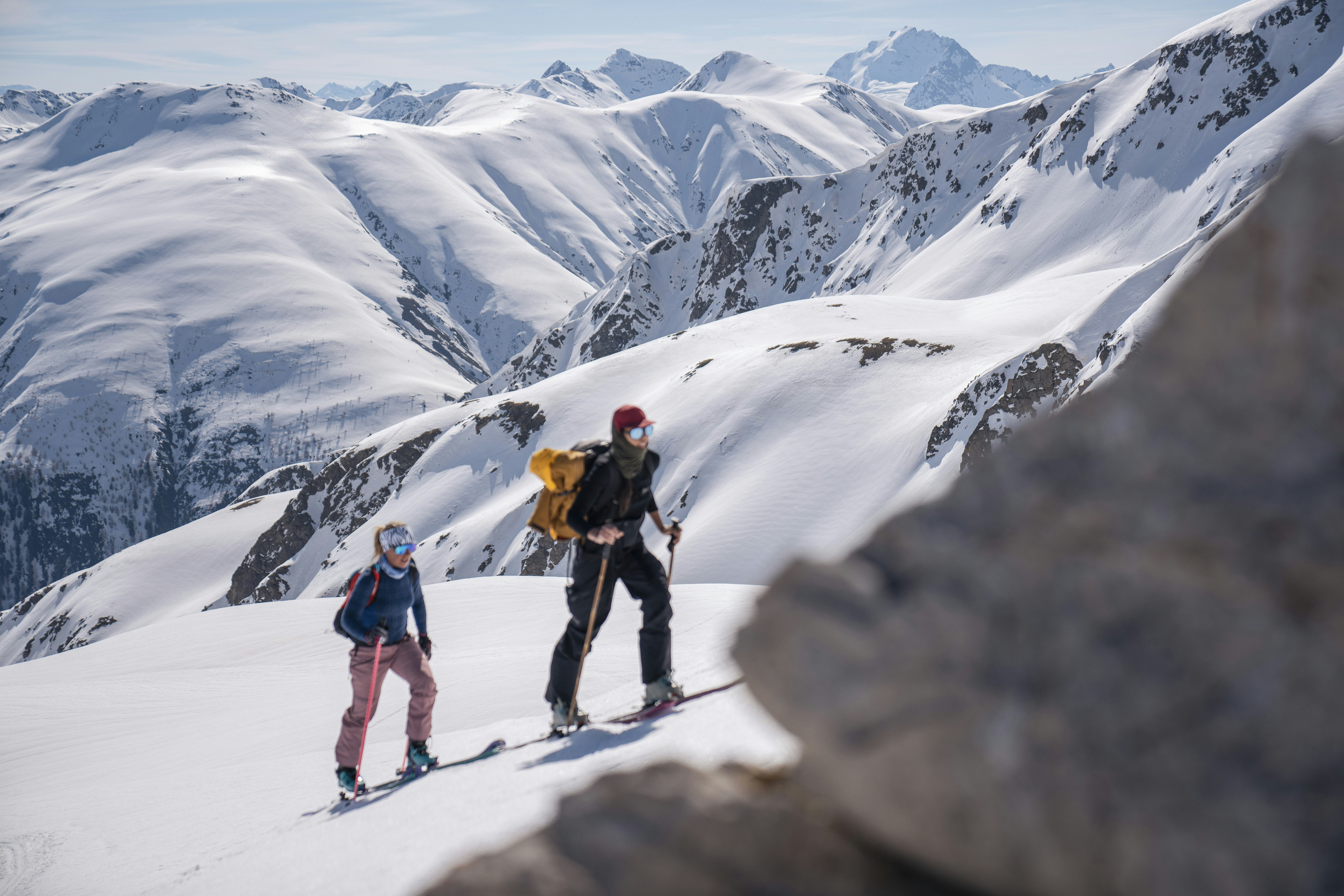Test center
Where the snow is always present
- Author: Claudio Primavesi
- Photographer: Pierre LucianazGiovanni DanieliElisa Bessega
Ponte di Legno - Tonale freeride paradise
Take a slope with just the right degree of steepness, plus a few changes in gradient, groomed at the center, and with some fresh snow or bumps along the margins. A slope that’s wide, yet not too long. With a fast cable car and reliable snow thanks to the altitude.
Then add in a four-star hotel, a panoramic spa, and gourmet dinners at the cable car station. The result is the perfect venue for testing skis and boots. Because to handle such a large number of products we need to be able to get up and down quickly to perform descent testing. And also because, the longer springtime days mean we still have a few hours of daylight to don skins and conduct uphill testing after the lifts close. The name of the resort is Pontedilegno Tonale. And our hotel of choice? Capanna Presena. Whether testing just some categories or all of them, for just a few days or an entire week, our testing team has been using the 2,753-high Capanna Presena for years now. The area is a paradise for ski tourers, not least because the resort offers a special pass that lets you take the cable cars to Passo Presena and the Valsozzine-Corno d' Aola chairlift. It’s an option designed to shorten the climb towards the Pisgana off-piste area or provide swifter access to the touring routes towards Pian di Neve and the heart of the Adamello range. And then in springtime the resort hosts the Adamello Ski Raid skimo race. Just one more good reason we choose Pontedilegno Tonale.

La Thuile - ski touring for all levels
Nestled the Aosta Valley, this resort is the base we use for our competition testing. It has something for everyone, from newbie tourers to those after some epic freeride lines.
And we chose La Thuile for our competition testing for good reason: It was the start point for the first stage of the Millet Tour du Rutor Extrême, which was held a few days before our tests. Which doesn’t mean La Thuile is a destination solely for skimo racers or expert ski mountaineers. For racers,or those who just want to get in some training, there are routes straddling the border with France and routinely prepared and signposted. One ascends from the top DMC cable car to the Colle del Belvedere (3.6 km, 382 m ascent) and three others on the French side ascend from La Rosière to Fort de la Traversette (4 km, 540 m ascent). To complete the entire traverse you either need to take a chairlift from Italy to France or two ski lifts to get back. All these routes can be tackled without self-rescue gear. For an introduction to ski touring, perhaps for those transitioning from resort skiing, it’s worth considering going with an Alpine Guide. “We offer courses from 3 to 5 days, starting off with an introduction on how to use self-rescue equipment, uphill progression, kick-turns and descent techniques. Each outing builds on the last and leads up to a final more challenging trip,” says Ettore Taufer, president of the Compagnie des Guides Rutor (340.0700010/11), who underlines that the course is for people who are already proficient piste skiers. Zerovertigo (zerovertigo.com) offers a one-day introduction to ski touring that ascends an easy panoramic route from Pont Serrand towards Piccolo San Bernardo, with a break at the Lo Riondet alpine hut. Equipment can be rented for the day. It offers a chance to learn the basics of self-rescue but in particular uphill progression. The descent is on-piste. Moving up a level, the Compagnie des Guides offers a selection of trips, while Zerovertigo offers a great freetouring classic: the Mont Valaisan/Freduaz pairing, which starts from the resort, involves a series of descents and reascents, enters the Italian side of the mountain, before descending to La Joux through the Ponteilles valley.

Prevention and safety: the example of Livigno
«Whilst we do address the issue of self-rescue, the philosophy behind the Avalanche and Weather Center is to provide as many tools as possible to stay out of trouble in the first place: self-rescue should be a last resort, and we work to ensure it doesn’t need to be used.»
Fabiano Monti is the coordinator of the Avalanche and Weather Center in Livigno, the only private Italian organization recognized by the European Avalanche Warning Services (EAWS), and an interesting example of a resort-based avalanche and weather center. A case history born out of pragmatism: Livigno is one of the resorts with the greatest amount of lift-accessible off-piste terrain, and precisely because of this, skiing out of bounds at the resort was banned by the local council until 2013. “To tackle this issue, we decided to focus first of all on providing information to deal with the aspect of the legal responsibility of the resort, and give skiers the necessary tools to ski off-piste responsibly,” recalls Fabiano. We started by organizing meetings with freeriders one Sunday evening at the local brewery, but also collaborated with the local TV network, posted info screens at the starts of the lifts, and sent out newsletters. The next step was to create introductory ski touring, freeride and snowshoe routes. For example for ski tourers there are now four ascent routes that are maintained, marked with poles and, if dangerous, closed. Naturally, users are in any case required to have self-rescue kit and they can choose to descend on- or off-piste.

The pride and joy of the Avalanche and Weather Center is the weather forecast and avalanche bulletin section of the livigno.eu website, which is updated daily. The weather forecast provides detailed data dividing the mountain into two bands: in the town and at altitude, while the avalanche bulletin is prepared in accordance with international standards and covers the Livigno valley. It’s issued in the evening, with morning updates if there are any abrupt changes to risk. Having a local weather and avalanche service allows for very detailed information to be provided. For example, there is a snow-quality bulletin, which—like the avalanche bulletin—divides the mountain into three levels: alpine, treeline, and below the tree line. It provides a graphical representation of the quality of the snowpack (fresh, wind slab, hardpack, crust, etc.) on various aspects and also translates them into skiing quality, expressed using five different ratings along with the probability of hitting rocks. “We’re developing maps indicating the areas that have seen avalanche activity along with potential terrain traps,” adds Fabiano. The work conducted by the Avalanche and Weather Center is continuously evolving. This even includes managing snow storage during the summer to minimize the use of snow machines when conditions are unfavorable, organizing various events, and regulating heliskiing according to criteria developed by the Province of Sondrio. These efforts help cover the costs of maintaining a permanent helicopter in Livigno throughout the season, which is crucial for ensuring the safety of the access roads. In a little over ten years, Livigno has made great strides in terms of prevention. And the results? Fabiano concludes: “We’ve seen an exponential increase in backcountry mountain access with no major increase in the number of serious accidents.”
livigno.eu
Share this article

